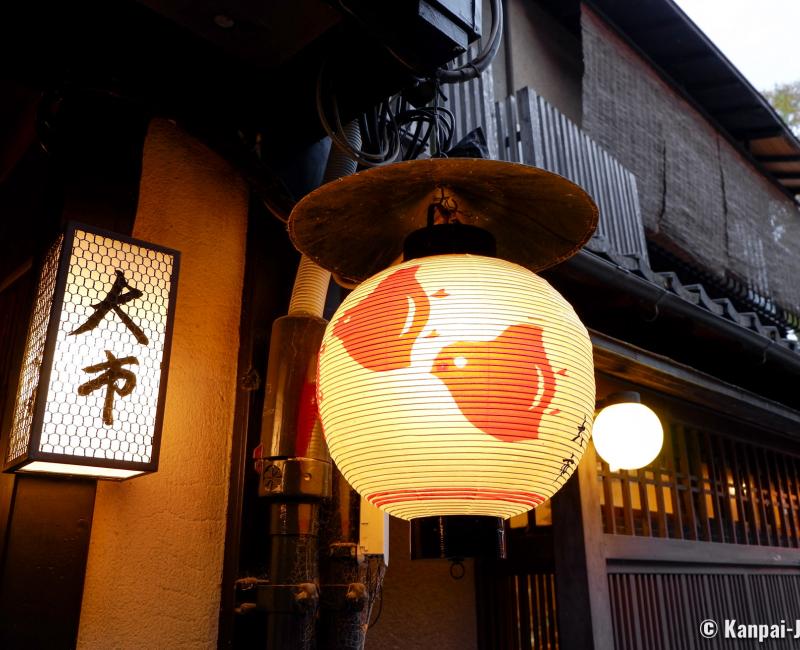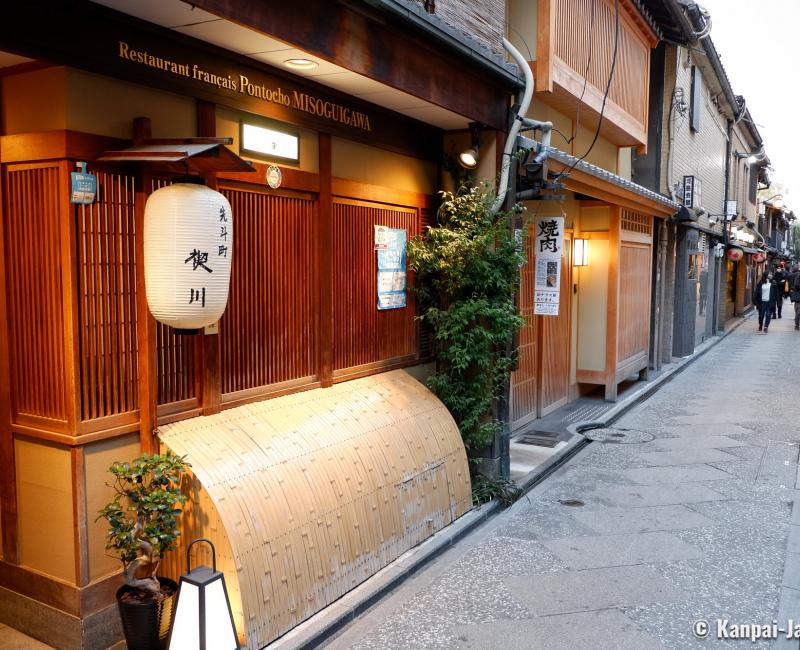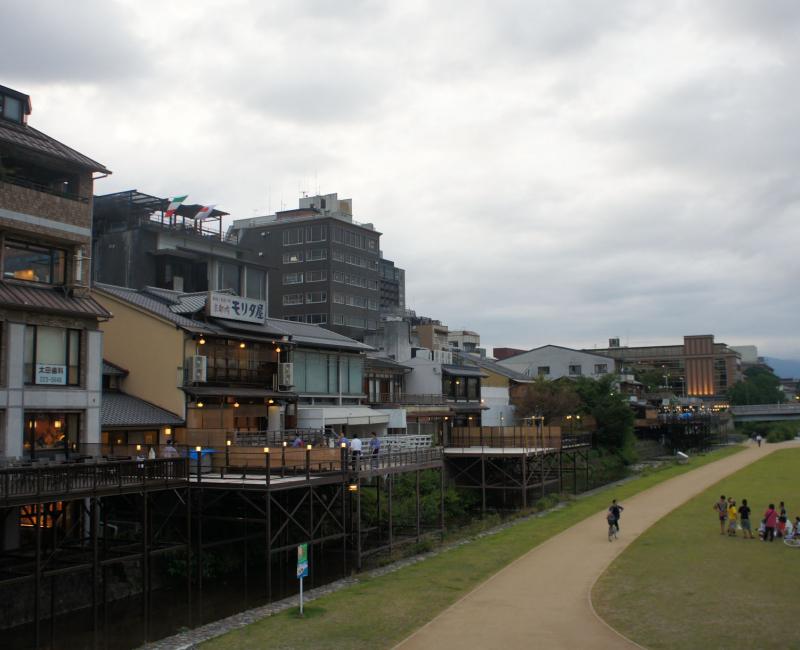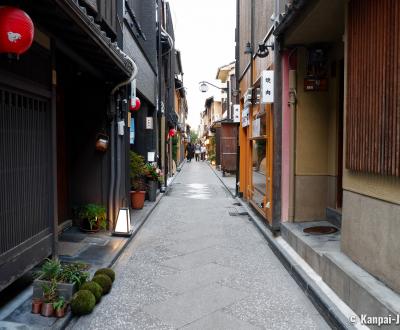Pontocho
Typical and Historical Entertainment Alley in Kyoto
Pontocho is a famous 500-meter long pedestrian walkway located between Shijo-dori and Sanjo-dori avenues, and parallel to the Kamo-gawa River in Kyoto’s downtown. It is renowned for its good restaurants and many bars and lively nightlife. Pontocho also names an historical Geisha district.
In the same area as Gion traditional district, Pontocho Alley is separated from Hanamikoji-dori and Shirakawa-dori streets by the Kamo-gawa river, that it follows from north to south. The alley was indeed created by embankment works between the rivers Kamo and Takase in the 1670s.
Its name is the combination of 2 words and refers to its location where the street is sandwiched between 2 streams of water:
- "Ponto" derived from the Portuguese and means "bridge" or "point", and,
- "Cho" means "district" / "block" in a Japanese city.
Pontocho quickly became a place to rest and entertain to travelers and merchants who traveled upstream on flat-bottomed boats.

One of the historical Geisha districts
The first ochaya tea houses opened in 1712 and one century later the street was granted an official license to become one of Kyoto’s hanamachi, that is to say a district where live and work a Geisha community. As living human treasures, Pontocho’s Geiko and their apprentices Maiko have been taking part ever since to the neighborhood’s artistic and historical fame.
Each spring 🌸 in May they perform their traditional Kamogawa Odori dance show at the Pontocho Kaburenjo Theater. It is also easy to see them during the celebration of Setsubun at Yasaka shrine each February 3.
Pontocho displays a typically traditional Japanese cityscape with 2-stories wooden buildings and many white and red suspended lanterns 🏮, decorated with the plover (chidori), a bird that is the symbol of the district. Since 2021, the thousands of electric cables that were hanging above the passersby have been buried and their ugly poles removed. The asphalt concrete was also replaced by a more authentic-looking pavement. Kyoto municipality is committed to preserving the old-fashioned charm of its most touristic historical districts.

Street with restaurants and bars for nightlife
Pontocho awakens at the end of the afternoon, when the sun sets. While quiet on the daytime, the alley becomes lively in the evening and particularly crowded on the weekend. The street is indeed an essential of Kyoto’s nightlife, with its countless restaurants, tea houses and izakaya pubs.
The restaurant offer is varied with many choices from traditional every-day Japanese cuisine to international cuisine. Many restaurants sell yakitori and yakiniku grilled meat.
Prices range from the very affordable to the very upscale, such as places hosting the areas’ geiko and maiko’s performances. We recommend comparing the menus, as many were translated into English and to check the last reviews on the internet 📶 to find a good price for value. Reservation is highly recommended for the most popular restaurants and / or for tables with a view on the river.

Summer offers the best ambiance to Pontocho, with a very convivial atmosphere. Restaurants with a view on the Kamo-gawa river set up their terraces on stilts to provide the best setting for dining in the open air. The clients thus benefit from the cool of the night with a refreshing wind along the stream and spent an agreeable time under the light of the lanterns.

